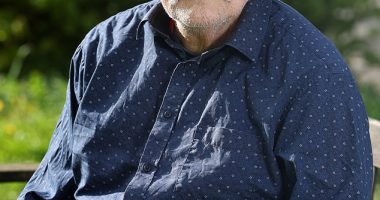“It’s not never, but it’s so rare,” Paul says. “It was striking to see how men were staying out there and women weren’t.”
To find out why, Paul embarked on her next adventure: Finding the women exploring the oceans, mountains, and other outdoor spaces as they age to discover how they were bucking the apparent norm, and what they had to teach us all. That’s the topic of the New York Times bestselling author’s latest book, Tough Broad: From Boogie Boarding to Wing Walking―How Outdoor Adventure Improves Our Lives as We Age.
Experts In This Article
As she spoke to base jumpers and skateboarders alike—people in their 60s, 70s, 80s, and even 90s who were anything but old and fragile—she realized the women (and men) she met were some of the most full of life she’d ever met. She began to notice similarities between them, which she has come to identify as the five pillars of healthy aging. And all of them also did one important thing: they spent time in nature.
A 60-year-old outdoorswoman’s 5 pillars of healthy aging
The physically, mentally, and emotionally fit older adults Paul profiled had five attributes in common:
- They were part of a community
- They had a purpose or drive
- They were constantly learning and discovering new things
- They maintained their physical health
- They had a positive view of their own aging
The first four pillars are very much in line with the tenets of healthy aging1 outlined by The World Health Organization and International Longevity Center: health, participation, security, and lifelong learning. As Paul herself came to an understanding of what gives people vitality as they age, she found the WHO pillars to be true in practice, with some clarifications and additions supported by studies. Notably, she identified the importance of mindset about aging—which was especially crucial for women in particular.
“The messaging that we get as women, as we age, is basically that we’re frail and we are getting frailer.”—Caroline Paul
“The messaging that we get as women, as we age, is basically that we’re frail and we are getting frailer,” Paul says. That messaging keeps older women from trying new things and being active because it breeds fear and caution. It is the next iteration of the messaging younger women get that they shouldn’t go places alone or talk to strangers, rooted in the societal pigeonholing of women as weak and vulnerable. “It was clear to me that our messaging was really toxic and men weren’t getting the same messages because they were there, they were out there.”
Having a positive view of your abilities and vitality as you age is actually correlated with quality of life2 and longevity3.
“If you have a negative view of your own aging, that you’re going to be frail, that you’re going to be on a cognitive decline, in fact, that happens,” Paul says. “So it’s important to have a positive mindset about our own aging, but how do you get that in the face of such toxic messaging?”
For the phenoms she met, the foundation at the base of these pillars was spending time adventuring outdoors.
The foundation at the base of these pillars was spending time adventuring outdoors.
“What nature asks of you when you step outside is the direct rebuke to all this messaging,” Paul says. “Going outside and trying an activity will up your confidence and upend what you think you can do. All these women would try something small and realize, oh, if I can do that, what else can I do?”
How adventuring in nature can support healthy aging
Being in nature has proven mental health benefits. However, Paul acknowledges that jumping into an outdoor activity can be intimidating or unrealistic for many, especially if they are concerned about breaking bones, or don’t have access to outdoor spaces, like many marginalized groups.
But doing something “high octane” or deep in the mountains isn’t necessary, says Paul. Going bird watching in your neighborhood can make you feel like you’re on a quest, visiting scenic vistas can give you appreciation of the world and what’s around you, and taking a dunk in the community pool or the ocean can make you feel alive.
To illustrate how doing outdoor activities can be the key to standing up the five pillars, Paul gives the example of a member of a boogie boarding group of older women in San Diego. One of her subjects joined the group several years ago having never boogie boarded before. First and foremost, this helped her become part of a community. She also had something to go do in the morning five days a week, which gave her purpose. She was trying something new and testing her boundaries, which helped her mind continually learn new things. She was swimming and walking and playing in the sand and surf, which kept her muscles working and blood pumping. And finally, with her face in the wind and the sea spray three mornings a week, she felt not marginalized or like her best years were behind her, but exhilarated.
“I was in the water with them,” Paul says of the boogie boarding group. “None of them felt frail or on a cognitive decline or boring. So when you step outside, no matter what your activity is, you pretty much are upending your own expectations of yourself and what other people believe. And that is where the power lies.”
Well+Good articles reference scientific, reliable, recent, robust studies to back up the information we share. You can trust us along your wellness journey.
- Hijas-Gómez, A I et al. “The WHO active ageing pillars and its association with survival: Findings from a population-based study in Spain.” Archives of gerontology and geriatrics vol. 90 (2020): 104114. doi:10.1016/j.archger.2020.104114
- Ingrand, Isabelle et al. “Positive perception of aging is a key predictor of quality-of-life in aging people.” PloS one vol. 13,10 e0204044. 3 Oct. 2018, doi:10.1371/journal.pone.0204044
- Levy, Becca R et al. “Longevity increased by positive self-perceptions of aging.” Journal of personality and social psychology vol. 83,2 (2002): 261-70. doi:10.1037//0022-3514.83.2.261
Our editors independently select these products. Making a purchase through our links may earn Well+Good a commission.
Source: Well and Good





